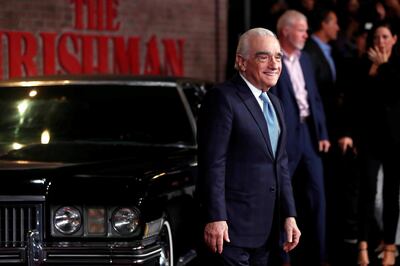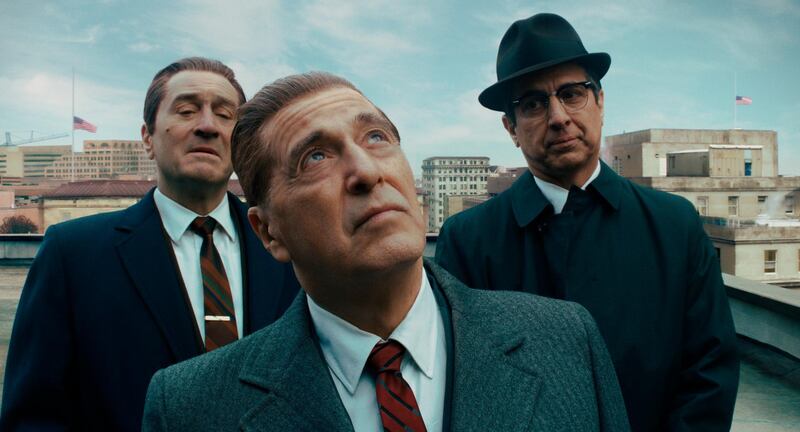Christmas time is big for filmmakers as well as audiences. The holidays mean they roll out blockbusters suitable for all the family. The latest Star Wars franchise and Frozen 2 are among those in my local cinemas. For the film industry, this is a hugely important time not just for the money they bring in but also for creating publicity for the awards season early in the new year. Yet this year, filmmakers are increasingly debating not just what we watch but how we watch it.
Martin Scorsese, with a string of hits going back decades including Taxi Driver and The Wolf of Wall Street, has enthused most audiences and critics with his latest epic, The Irishman, starring veterans Robert De Niro, Al Pacino and Joe Pesci. It is an extraordinary piece of filmmaking for many reasons – including the way in which the key actors are made "younger" for the movie. But Scorsese – one of the most bankable directors working today – took years to get financial backing to making the film. And now he has re-opened the debate about how best to see it.
In an interview with the Rolling Stone magazine, he bluntly said: "I would suggest if you ever want to see one of my pictures, or most films, please, please don't look at it on a phone. Please."
It is difficult to find reliable facts about how many of us have traded in the big screen of a movie theatre for the small screen of a television or the even smaller screen of a laptop, tablet or phone. But the trend is clear: in 2018, a global digital forecast by eMarketer, a US-based market research company, predicted 78.4 per cent of viewers will use their mobile phones to watch digitally-streamed content.
Forecasts that have percentages defined down to decimal points should be treated with great caution. But if you ever travel much on trains and planes, the anecdotal evidence of your own eyes is obvious. More and more of us are doing the one thing Scorsese warns us against and using a tiny device to watch a great work of cinematic art, as well as TV shows and other material.
The Scorsese argument is simply that if you watch a film on a phone, you cannot possibly get the same experience as on a big screen. True. But you do get some kind of experience. Moreover, we live in a time-poor world where every minute counts, especially in our precious leisure time. There are some films – The Irishman is one – when seeing it on the big screen is a transformative experience, exactly as its director intended. But Scorsese's film is three hours and 30 minutes in length, and many of his fans – I suspect the vast majority – will indeed see it on a much smaller screen.

Netflix funded the movie and that means most of us will probably pause it several times to go and make a coffee, or even watch it over a couple of days to fit in with the pressures of our normal lives. Scorsese of course knows all this. “Ideally I’d like you to go to a theatre look at it on a big screen from beginning to end," he said. "And I know it’s long – you gotta get up, you gotta go to the bathroom – that sort of thing. I get it.”
The simple fact is that once upon a time, we had to go to where the filmmakers wanted us to go – movie theatres – at a time when they chose to show us their films, pay their prices, eat their popcorn and sit through a three-hour epic without going to the bathroom in case we miss some vital scene. Now audiences are in control.
We see the films of our choosing, at the times of our choosing, eating any snacks we care to provide and if we get half-way through an epic like The Irishman, we can go to bed knowing that the streaming service will re-start the movie at the right place whenever we have more leisure time to watch to the end. This is good for business – and for art.
In the latest figures from the Motion Picture Association of America, movie sales in theatres and home-viewing hit a record $96.8 billion in revenues last year. That is nine per cent up on the previous year. Box office receipts alone are expected to be more than $11 billion in 2019 with TV and home video earnings expected to hit $96 billion – a projected rise of roughly 10 per cent.
We need artists like Scorsese to make important points about the craft of movie-making and celebrate the cultural importance of the big screen. But we also need great movies. The Irishman would not have been funded without profound changes to the industry. Major studios did not back the project. It took years to make until Netflix risked $159 million on it.
All of us, including Scorsese, come out as winners – however you choose to see his work.
Gavin Esler is a journalist, author and presenter






